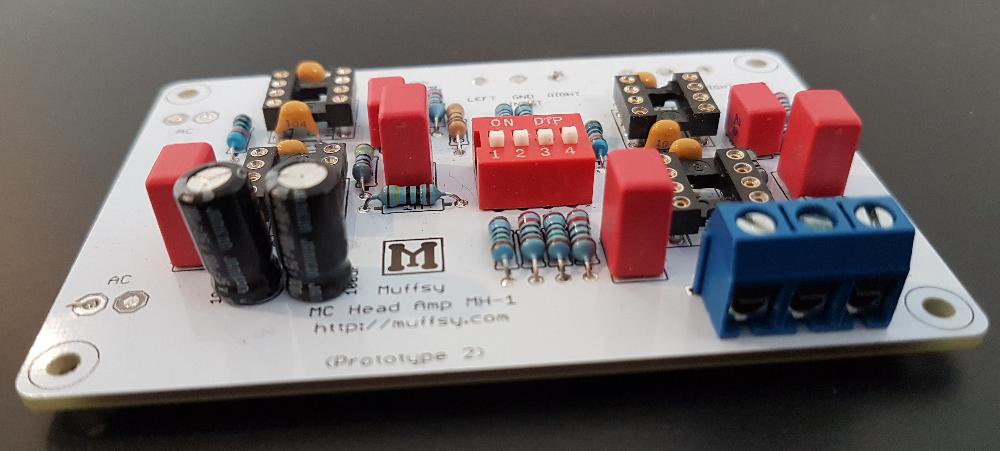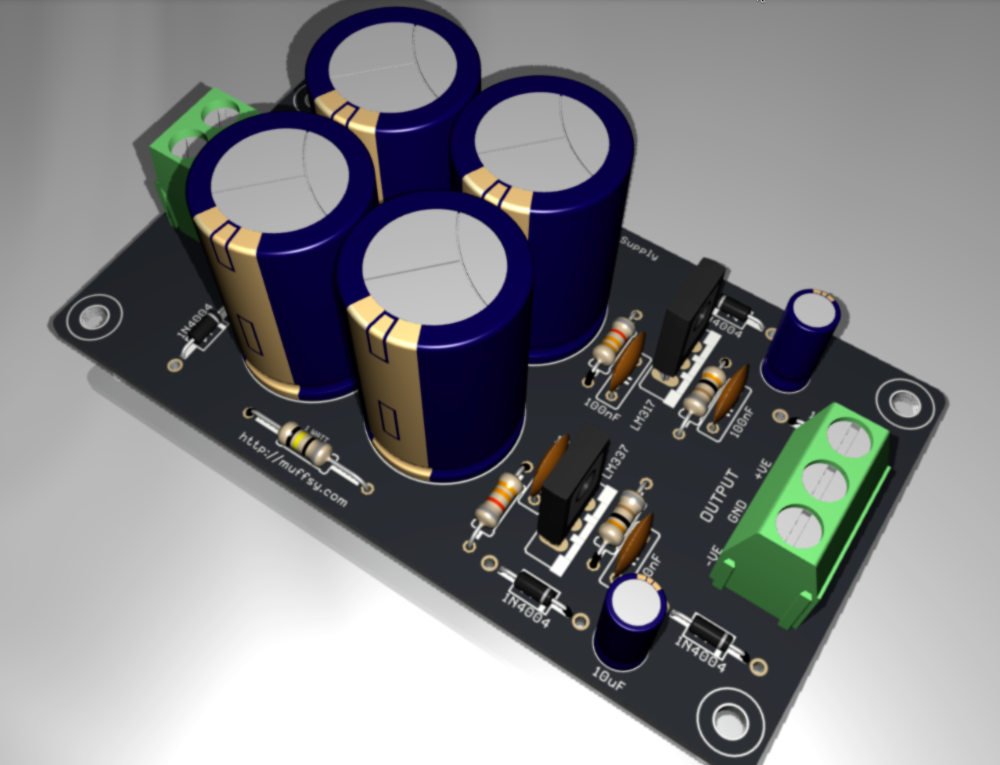Blog tagged as muffsy
You may have noticed that the Muffsy MC Head Amp is on its way. UPDATE: It's already here!
Here's why you might want one for yourself.
While we're waiting for the Muffsy MC Head Amp, here's a sneak peek of the new back panel for the B0905 cabinet.
There are a lot of considerations to make when dealing with the very low output from an MC cartridge. Noise and interference should be avoided in all parts of the design, and that's why th...
The Muffsy Phono Preamp is, and will continue to be an MM phono stage. Moving magnet and moving coil cartridges require different operational amplifiers, so a combination of MM and MC is not feasible at this size and price point.
Until now, the only way to use the Muffsy with moving coil cartridges ...
There are several ways to make your own Muffsy Phono Preamp, but the power supply has been missing. Until now. Below are both gerbers and PDFs that allows you to order or etch your own power supply boards.
The signal to noise ratio (SNR) compares the level of the audio signal to the background noise. An SNR of at least 65 dB is what's needed to have a completely silent phono stage. The Muffsy Phono Preamp's SNR, with OPA2134, comes in at 79.46 dB as shown below.
The measurement of signal to noise ratio...
NOTE:
This modification is only intended for the Muffsy Phono Preamp together with the Muffsy Power Supply and Back Panel in the recommended B0905 enclosure. Before you try this, have a look at the other ways of eliminating hum.
Arno just completed building the Muffsy Phono Preamp, and was haunted by...
We've seen how the RIAA filter behaves with low and very low capacitor values. (See all simulation articles here) Now let's have a look at what happens if the capacitor values are higher than the recommended ones.
This is the Muffsy Phono Preamp with capacitor values that are 2.5% higher than specifi...
Ryan has built the Muffsy Phono Preamp, and wrote about it on his blog. Thanks for the great review Ryan!
He offers up some beautiful pictures of his build, and writes about the whole building experience.
I wanted to know what happened to the Muffsy RIAA compliance if the capacitors were out of spec, and started with a plausible scenario where the capacitors were 3% below their stated values.
This time, lets see what happens if the capacitor values are extremely low. Let's say they're 10% below what ...
Hot on the heals of the official Muffsy PCB, here comes another option.
Over at theslowdiyer's blog, you can now find the project files for the Muffsy Clone.
Categories
- Uncategorized
(2)
- News
(23)
- Instructions
(1)
- Modifications
(6)
- Measurements
(13)
- Pictures
(6)
- Side Projects
(7)
Tags
- homepage
- muffsy
- phonostage
- vinyl
- modifications
- psu
- HackadayPrize
- noise floor
- thd
- riaa
- backpanel
- tindie
- pictures
- ivo
- smd
- reviews
- kit
- muffsy clone
- integrated
- dual
- turntable
- components
- capacitors
- nichicon
- power supply
- screws
- op amp
- njm2068
- simulatioin
- pcb
- gerber
- audiokarma
- cnc
- MYOM
- simulation
- ground
- hum
- shielding
- snr
- noise
- powersupply
- moving coil
- mc
- head amp
- back panel
- hackaday
- launch
- LED-Tester
- LED
- PCB
- Schematics
- constant current
- the BSTRD
- tube
- valve
- preamp
- eagle
- bstrd
- sideproject
- stamp
- packaging
- inverse riaa
- hifisonix
- power
- step-down
- transistor tester
- smd stencil
- measurements
- youtube
- rip
- headphones
- headphone amp
- koss
- portapro
- sennheiser
- qa401
- burson
- discrete op amp
- audio analyzer
- frequency response
- relay
- open source
- input selector
- esp32
- iot
- website
- lightbox
- diy
- photo
- mia lights
- photogeeks11
- pp-4
- logo
- font
- osifont
- png
- muffsyfont
- layout
- relay input selector
- tq-2
- panasonic
- myom
- irm
- meanwell
- 5V
- 5VDC
- 5 volts
- autodesk eagle
- spice
- ltspice
- riaa equalization

